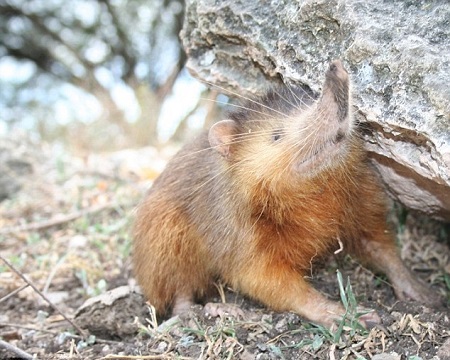The Hispaniolan solenodon is one of the only mammals in the world that can inject prey with a venomous bite.
Now experts have come one step closer to revealing how it got its potentially deadly weapon by sequencing the creature’s mitochondrial genome.
The study, revealed the mammal diverged from all other living mammals 78 million years ago, before the dinosaurs became extinct.
This may explain why the Hispaniolan solenodon, which is found on an island, is so unusual.
Its deadly saliva is secreted through a narrow groove in specialised teeth, making it one of the most evolutionary distinct creatures in the world.
Co-first author Adam Brandt said: ‘It’s just impressive it’s survived this long.
Researchers collected samples of DNA by lying on the ground and waiting for the strange mammals to clamber over them
They used two methods to sequence the traces of mitochondrial DNA collected, which can be used as a genetic record to make a family tree of animals.
It bolsters a previous study that used DNA to estimate solenodons diverged from mammals during the Cretaceous Period 76 million years ago.
The finding also supports the idea that the island was part of a volcanic 75 million years ago that gradually moved eastward – perhaps explaining how the isolated animals came to live there and evolve.
Lead researcher Alfred Roca said: ‘Whether they got on the island, or whether they floated over on driftwood or whatever else much later is not very clear.’
The solenodon is endangered and experts may redouble their efforts to save the animal seeing as it’s the only remnant of an incredibly old group of animals.
It’s threatened by dogs, cats, and humans.
Source: Daily mail
N.H.Kh

